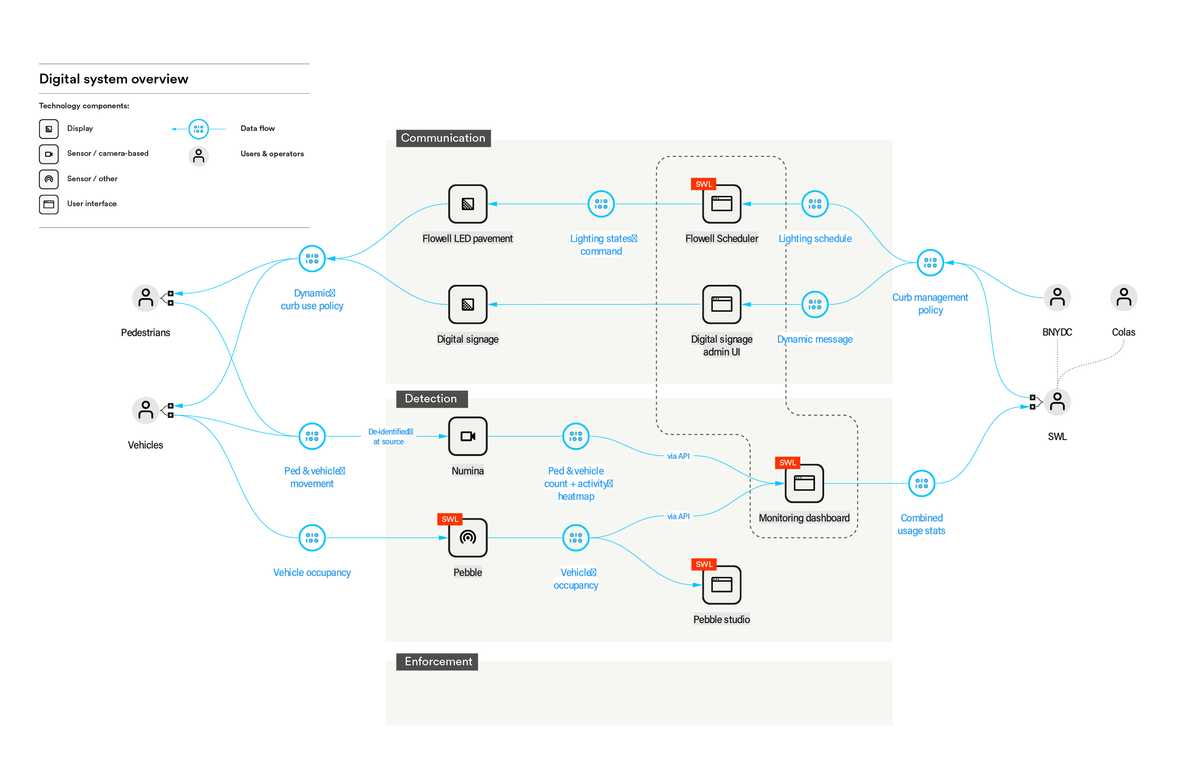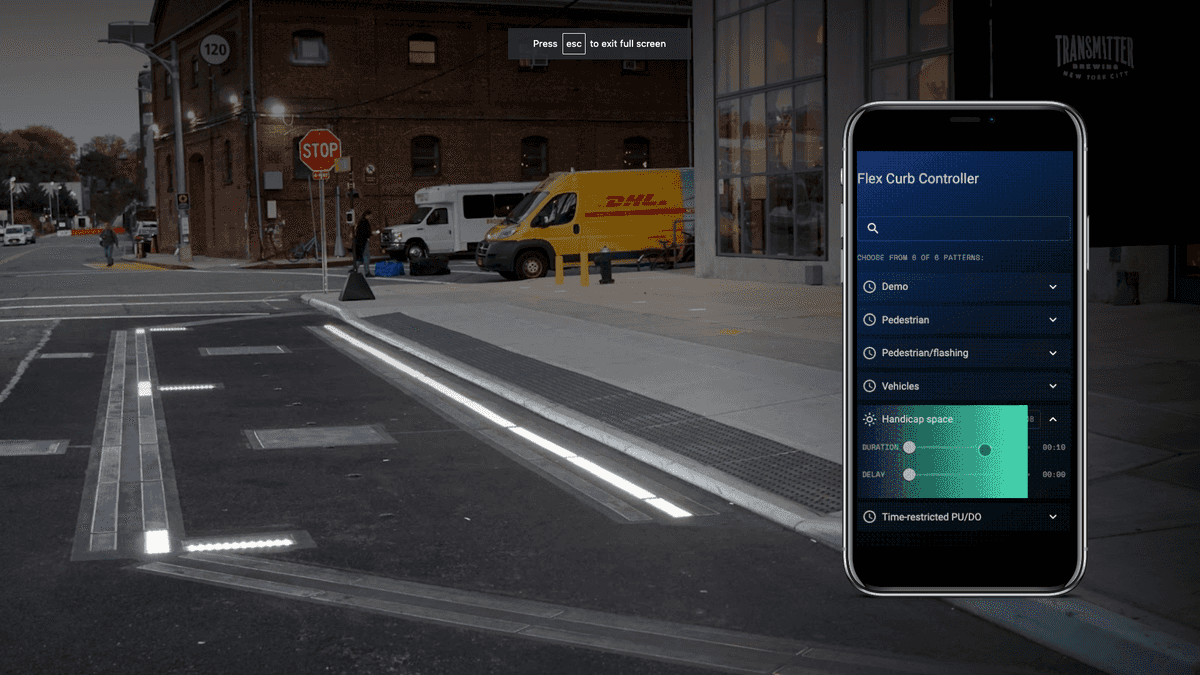I led a ~$1 million R&D program at Sidewalk Labs, focused on envisioning “urban streets of the future” as both a space for the dynamic social life of the city and a platform for evolving technologies of mobility, logistics, energy, and sensing. The program brought together many domain experts and technology partners. My role spanned vision and strategy, program management and execution, design, and digital prototyping.
Designing Purposeful, Human-centered Use Cases
The program began with researching real-world needs, desired human-centered outcomes, and new technology affordances, and built purposeful use cases around these outcomes. With Colas (one of the world's largest infrastructure builders, and a key program partner) and Arup, I undertook a strategic design process that resulted in use cases built around flexible curb space management, pedestrian safety, and vehicle charging.

Concept Design for the Flex Curb
One of the use cases resulted in the Flex Curb, a technology concept to enable dynamic curb space use by allowing the street surface itself to communicate, using new sensing and LED pavement technologies.

Designing for Digital-Physical Systems
Designing hybrid digital-physical systems for the urban environment entail unique challenges in bringing together space, technology, and organizational form. I led the exploration of new design methods to address these challenges.

Digital-physical Prototyping
We secured a site at Brooklyn Navy Yard to bring the Flex Curb concept to life. The prototype involved a real-world installation of Colas’s Flowell LED pavement, as well as a set of APIs and software apps for visualization and control, which I prototyped.


Future Design Briefs
The “streets of the future” program generated more R&D briefs for the future: the need for a “digital ontology” of the urban public realm to allow integration among IoT-based technologies; new design paradigms for human-technology-infrastructure interactions, and finally, the need for a new kind of integrative design capacity that can work on digital-physical systems, that can effectively combine the design of spaces, UX, services, and organizations with technology assessment and prototyping.
